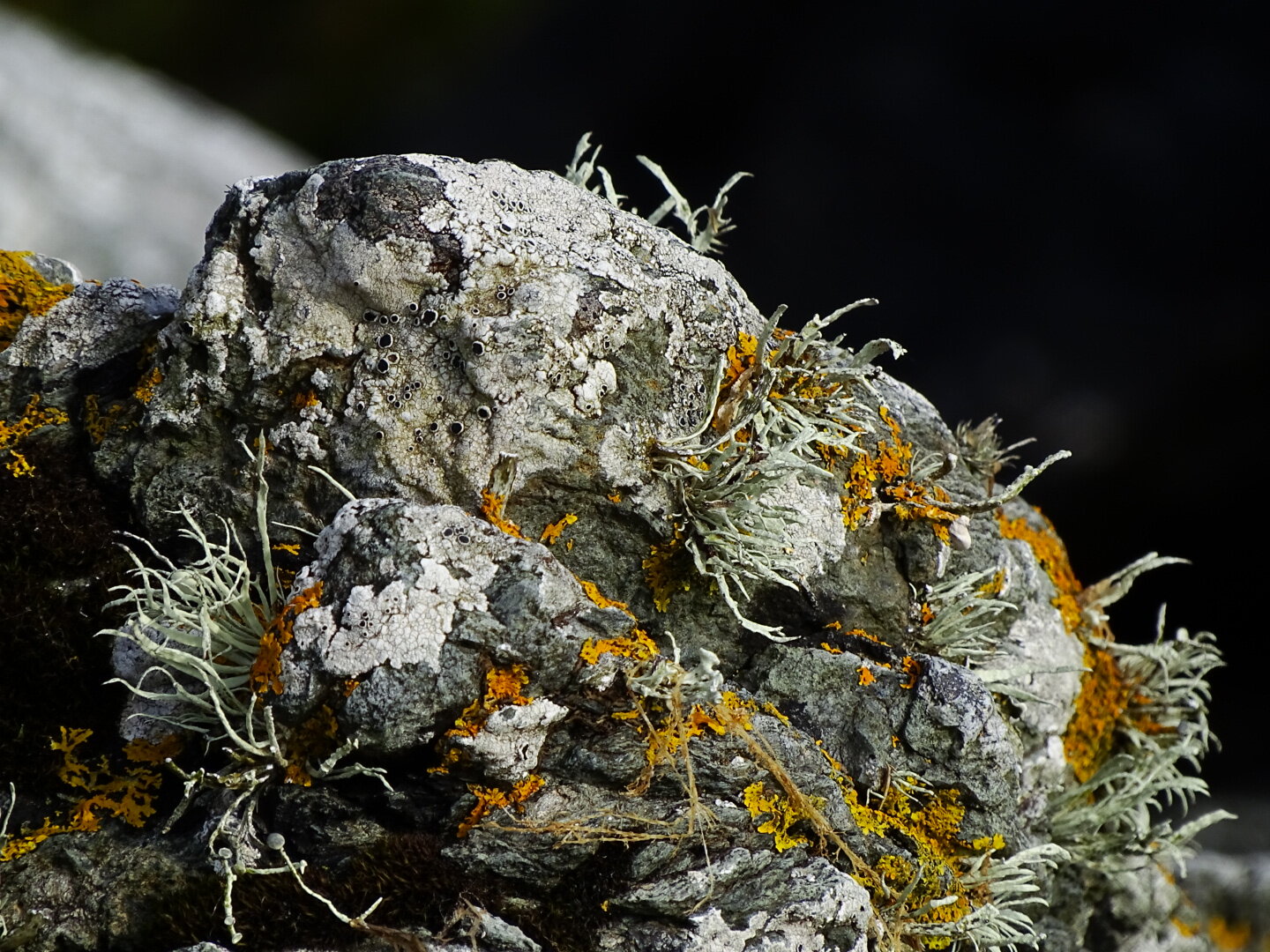A rock by the sea covered in at least three types of lichen…
It’s the grey stuff, the green stuff, the orange and yellow stuff you get on wood, stone and the soil that gives the world a bit more colour and texture, but it’s more than that...
Lichens are a community, mainly made of a mix fungi (think mushrooms) and algae (think seaweed)...and sometimes cyanobacteria (think bacteria that behave a bit like plants) and at times, yeast (think bread, but mainly - think single-celled fungi).
The fungus provides the structure, protecting the community from UV rays and supplying moisture to the other organisms which live there.
The algae or the cyanobacteria, in turn, use sunlight to produce sugars which the fungi harvest by pressing their filaments through their bedfellow’s cell walls.
The yeast element, only discovered in lichen around 2016, is thought to produce toxins that may protect the lichen from predation.
So, Lichen is like a mini ecosystem but is it a symbiotic relationship, where all parties benefit, or is it like a kind of one-sided, bad marriage, where the fungi win? On their own, algae and cyanobacteria can manage ok, whereas the fungi shrivels and dies.
Lichenisation may be a fungal lifestyle that evolved about 600 million years ago.
Lichen cover about 7% of the earth’s surface. Some grow very slowly, and can live for 10,000 years, others spread rapidly and chalk up three foot in a year.
There are over 28,000 different types, if you can think of a shape or a colour, there’s a good chance a lichen like that already exists.
There are about 1,600 species of lichen in Scotland and we have all three of the main types: the Crustose (Crusty growth form), Fruticose (Shrubby growth form) and Folios (leafy growth form).
A crustose lichen, like the chewing gum lichen, is often found on curbstones. Named for obvious reasons, it prefers clean air. You won’t find it in polluted cities, so if you see something like that on the street in Kanpur, it really is chewing gum.
Foliose lichen (leaf-like) fix nitrogen from the atmosphere and then make it available to the surrounding plants.
Shrubby lichen (fruticose lichen) are extremely sensitive to climate change and can be very important indicators of air purity.
So, how do lichen benefit the environment? Well, some creatures use lichen for mimicry, some for nest material, some for food.
We use them in the production of natural dyes, perfumes, litmus paper, and even for food in some places. The bigger use to humans may however, as yet, be untapped...
70% of all pharmaceutical drugs originate in nature and as lichens produce about 1000 unique chemicals, we’d be nuts to ignore them.
This is worth thinking about as, according to recent estimates, 40% of all fungi are heading towards extinction…
Sometimes known as the coral of the forests, lichens are a vital part of our biodiversity.
Sometimes, it’s not the bird in the tree we should be looking at but the lichen on the branch.
Old man’s beard lichen is stretchy and was used as the original tinsel on Xmas trees. Seen here, hanging down as green filaments below the spotted flycatcher, it only grows where the air is particularly pure. So, good news for Balloch - Loch Lomond, where this picture was taken.





